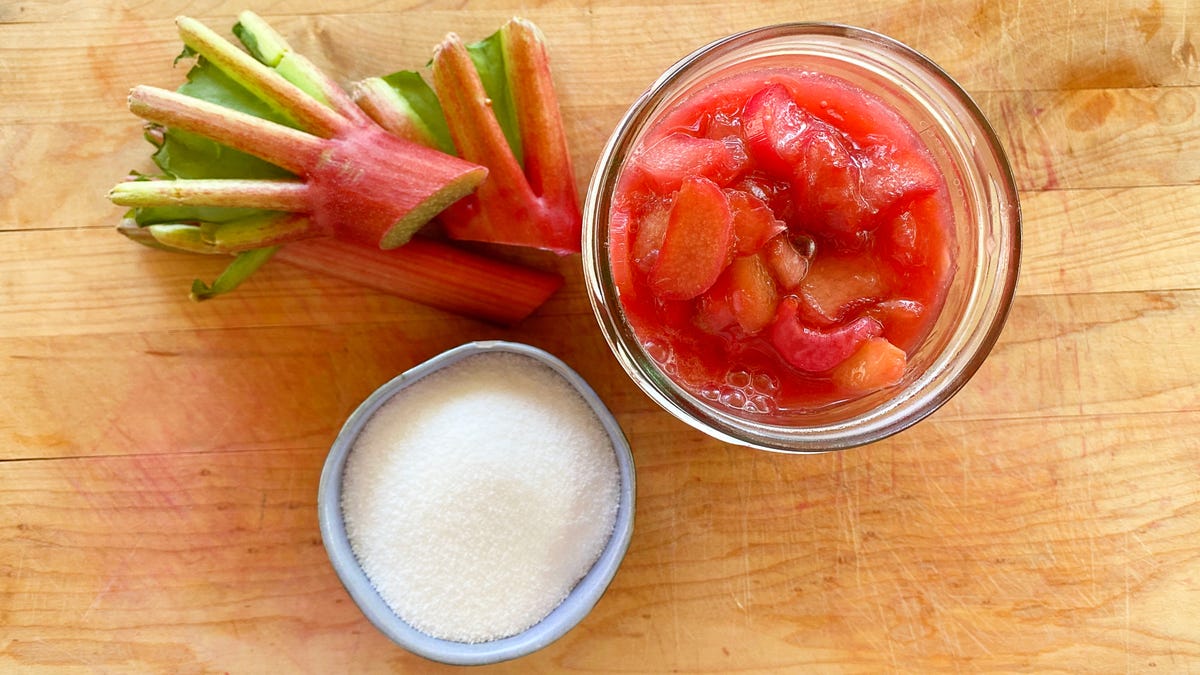Why Cook Jam When You Can Make Compote?

As you age, you begin to accept certain truths about yourself. For example, I know that I will never do pole dancing, enjoy oatmeal at night, or do canning. As for the latter, my garden isn’t prolific enough to justify it, but more importantly, I don’t want to. My jam needs are met by Bonne Maman’s strawberry jam and my stepmother’s pepper jelly, and I’m more of a compote lover anyway.
Compote, for the unfamiliar, is a nice-sounding word for a simple sauce. It’s made from fruit and sugar, and cooks much faster than jam or jelly, and with much less precision. Compote can be loose and bold or thick and shiny; it is entirely up to you.
The fruit to sugar ratio also depends on the inherent sweetness of the fruit. I’ve seen “healthy” compote recipes that call for just one teaspoon of sugar and a few cups of fruit, but I use a little more. I start with two tablespoons of sugar for every cup of fruit, and add more to taste if I feel I need it.
Another difference between compote and jam or other jam is the presence of noticeable pieces of fruit. You need to cook compote only until the fruit gives juice and becomes soft. This usually means bringing it to a boil and then letting it simmer for a couple of minutes. That’s all; You just made compote. If you cook the compote for too long and the fruit turns into mush, don’t worry about it. It’s a sauce, and the sauce is good too. You can also strain the sauce through a fine sieve to make a syrup. I made this with raspberry and rhubarb compote, which became very mushy, and used the syrup to flavor the iced tea. (I’m drinking this tea right now and it’s incredible.)
If you want it to be thick, you can add cornstarch slurry, but there’s nothing wrong with keeping it loose. You can also add flavored syrups (like this lemon syrup ) or extracts (like vanilla or almond). If you prefer a slurry, try using amaro or brandy instead of water when making the slurry. I added some Campari to the rhubarb compote, and oh my …
You can use just about any fruit to make compote – fresh or frozen, pretty or ugly, it’s all great. You can also use several fruits in one compote. (It’s legal.) This is an easy way to use fruits that are about to turn over, even if you have a lot of them. And the compote freezes well – I just finished last year’s Hood strawberry compote and I’m sad to see it go.
If you need a recipe to start your compote journey, I recommend a simple rhubarb compote. After all, rhubarb is in season, and turning it into compote allows you to eat it with a wide variety of foods (pancakes and ice cream are my favorites).
Light rhubarb compote
Ingredients:
- 2 cups of rhubarb, washed and chopped (no leaves – they are toxic).
- 1/4 cup sugar
- Optional: cornstarch slurry made with 1 tablespoon cornstarch and 1 tablespoon Campari.
- Optional: a capful of vanilla extract.
Combine fruit and sugar in a medium saucepan. Bring to a boil, stirring occasionally, then reduce the heat and simmer for about 2 minutes, until the rhubarb is soft but still holds its shape.
Taste and add more sugar if needed. If you want it to be thick and glossy, add some of the slurry and let it simmer for another 30 seconds. Remove from heat and add vanilla if using. Compote keeps for two weeks in the refrigerator and several months in the freezer.